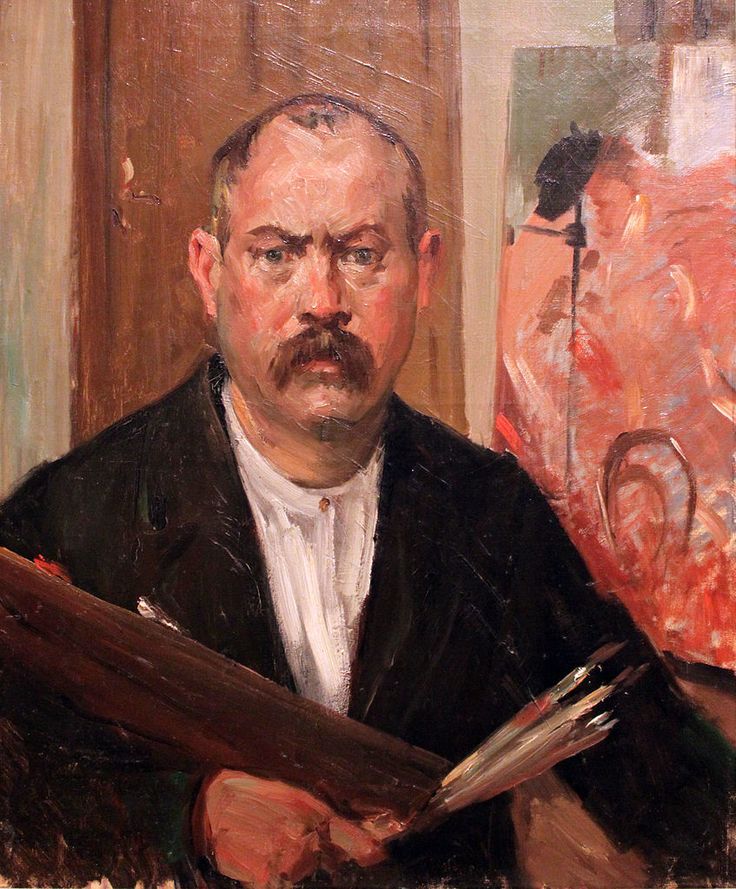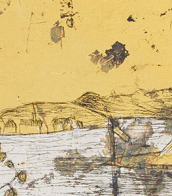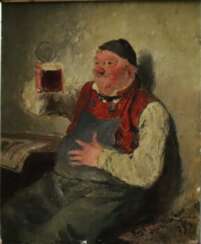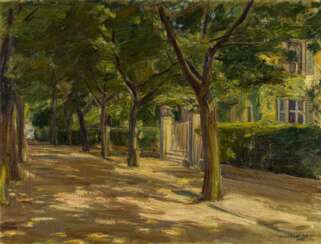hugo kaufmann

Carl Spitzweg was a German romanticist painter, especially of genre subjects. He is considered to be one of the most important artists of the Biedermeier era.


Theodor Joseph Hagen was a German painter and art teacher.
He was one of the founders of German Impressionism. After trying out several styles during his early years, he became attracted to the plein-air painting of the French Barbizon School.
From 1893, he was a member of the Munich Secession and, from 1902, the Berlin Secession.


Rudolf Schramm-Zittau, actually Rudolph Max Schramm, also Rudolf Schramm, was a late Impressionist German painter of city and animal pictures. He gave himself the suffix "-Zittau" to show his attachment to the city of his birth.


Heinrich Wilhelm Trübner was a German realist painter of the circle of Wilhelm Leibl.


Franz von Defregger was an Austrian artist known for producing genre art and history paintings set in his native county of Tyrol.


Max Liebermann was a German painter and printmaker, and one of the leading proponents of Impressionism in Germany and continental Europe. In addition to his activity as an artist, he also assembled an important collection of French Impressionist works.


Max Liebermann was a German painter and printmaker, and one of the leading proponents of Impressionism in Germany and continental Europe. In addition to his activity as an artist, he also assembled an important collection of French Impressionist works.


Lovis Corinth was a German artist and writer whose mature work as a painter and printmaker realized a synthesis of impressionism and expressionism.
Corinth studied in Paris and Munich, joined the Berlin Secession group, later succeeding Max Liebermann as the group's president. His early work was naturalistic in approach. Corinth was initially antagonistic towards the expressionist movement, but after a stroke in 1911 his style loosened and took on many expressionistic qualities. His use of color became more vibrant, and he created portraits and landscapes of extraordinary vitality and power. Corinth's subject matter also included nudes and biblical scenes.


Julius Adam d. J. was a German animal painter who became known primarily for his paintings of kittens, for which he earned the nickname Kittenadam. His father Julius Adam the Elder was a photographer and lithographer.


Albrecht Christoph Wilhelm von Diez was a German painter of the second half of the 19th and early 20th centuries. He is known as a painter and illustrator, a representative of the Munich school.
Wilhelm von Diez became known for his illustrations for the satirical magazine Fliegende Blätter and his work on illustrations for Schiller's History of the Thirty Years' War. His drawings were characterized by light brushstrokes in the manner of etchings and a clear treatment of shadow. Later he was engaged in animalistic, landscape and genre painting. In 1871 von Diez became a lecturer at the Munich Academy of Fine Arts and in this position he had a great influence on the development of his pupils and on the Munich school of painting in general.


Gustav Köhler was a German portrait painter of the Dusseldorf school.










































































